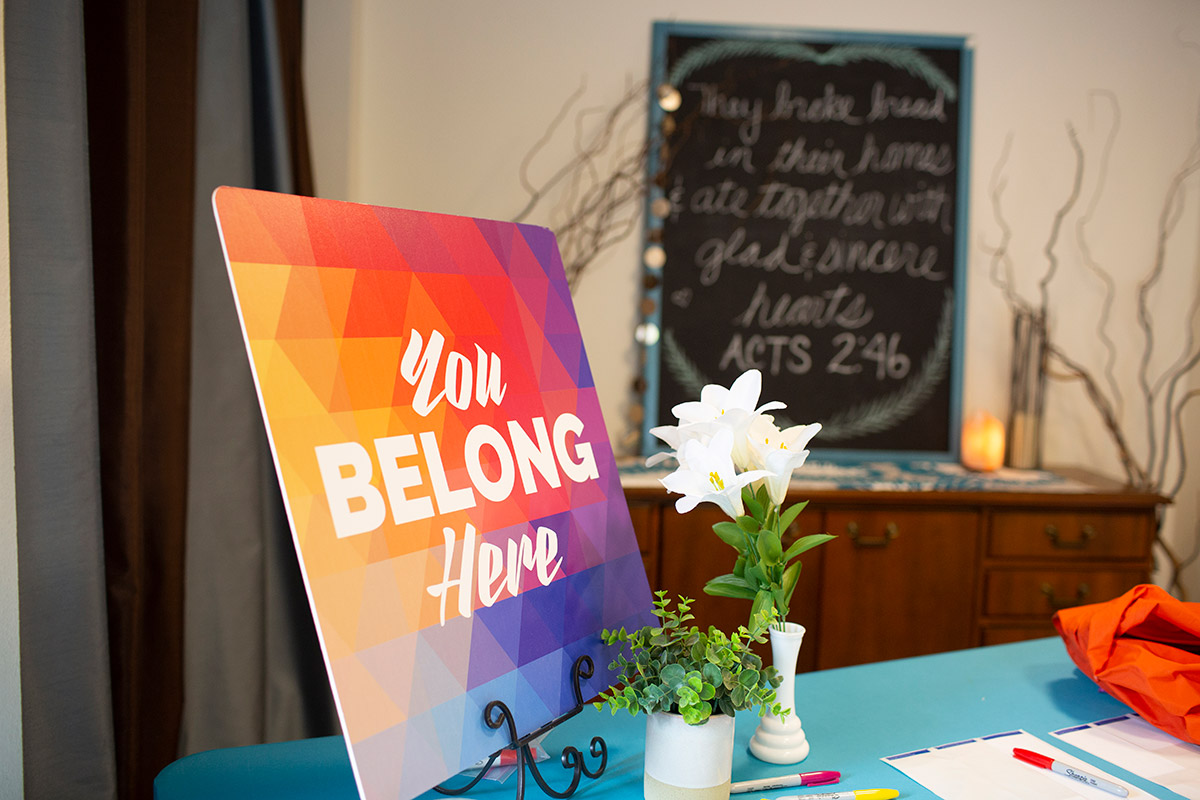A Church's Gift Inspires a Young Congregation
A Church's Gift Inspires a Young Congregation
Excerpt from A dying church’s gift inspires a young congregation to help people experiencing homelessness by Julia Duin for Faith & Leadership.
A dying Lutheran church in the Seattle suburb of Kirkland had a difficult decision. Should they close and sell their property, or should they give the assets to another congregation?
Trinity Lutheran Church’s decision to give up its property to new owners nearly a decade ago led to the planting of Salt House, an enterprising, high-tech Lutheran congregation.
With core values of generosity and radical welcome, the progressive church has embraced LGBTQ folks and established a fund for reparations. Among its biggest commitments: sheltering people experiencing homelessness. Today its campus includes a day center in the church basement and a twenty-four-hour shelter on land it sold to the city.
The original gift of the building and assets is now part of the congregation’s DNA, helping drive decisions about who and what they will become. “This whole ability to start Salt House was from the generosity of the dying ….So who were we to stint on generosity?” explained a Salt House pastor”
The Salt House story began in 2013. At that time, only a few dozen people were coming to Trinity Lutheran Church each Sunday, while Holy Spirit Lutheran, a nearby congregation with traditional worship but a liberal bent, was thriving. One day the pastor, Rev. Mike Anderson, got a phone call from leaders at Trinity. But “instead of trying to keep a dying congregation going, we decided it might be better to let the congregation die and resurrect a new one.”
Trinity wanted to have some say in what happened to its assets, which consisted of the church, the land it was on, a parsonage next door and $100,000 in the bank. Specifically, they wanted the building to house a worshipping community with a social justice outreach. Could Holy Spirit help?
Holy Spirit Lutheran spent eight months discerning and approving a vision for a place with contemporary worship to attract young adults. They came up with a church name – Salt House – and hired a thirty-something pastor, Rev. Sara Wolbrecht.
Holy Spirit’s support — together with the assets transferred from the now-defunct Trinity church — proved essential in helping Salt House attain parish status in the relatively quick time of three years.
The church wasn’t even a year old when it was approached by two Catholic parishes about their unfinished basement.
The Catholic groups had been looking for space to fund a day center for homeless families that would include showers, food service, and a laundry. They would pay to finish the basement and staff it with social workers from Catholic Community Services.
For the thirty people then attending Salt House, it was not an easy decision due to potential resistance from the surrounding community and the church’s original vision to focus on needs of youth. However, the congregation recognized the great need and opportunity and said yes to what became the New Bethlehem Day Center.
“It was an evolving mission and vision,” Anderson said. “You can plan your vision at the outset, but you also must respond to opportunities and needs which arise.”
But Salt House members’ commitment to helping the unhoused didn’t stop there. When approached by Deputy City Manager Tracey Dunlap, a member of Holy Spirit, about buying a portion of their land to build a homeless shelter, they agreed.
Now Kirkland Place for Families and Women operates right next to the church.
The congregation, now with some 150 people, works to include people experiencing homelessness through activities such as quarterly feasts; toiletry, sock, and gift card drives; and training for tutoring and parenting. Salt House also allots about $5,000 annually to fund outreach to the LGBTQ community and 1 percent of its offerings for reparations to black individuals.
Wolbrecht summarized these ministries in a sermon as a retrospective of the congregation’s first seven years and a vision for the next seven. She preached on Jesus’s questions to Peter during a post-resurrection appearance.
“What does it look like to love like Jesus here and now?” she asked. Then she ran through a dizzying list of activities Salt House oversees.
“Do you feel where we’ve been is incredible?” she asked. “Do you feel led to be where we are going right now?”
Judging from the applause, they did.
Read the full story.
This story is part of Lake Institute’s story collection, the Faithful Generosity Story Shelf, which highlights congregations and other religious organizations who have sought to use their assets and resources in creative—and sometimes surprising—ways as an expression of faithful giving.
Each entry in our Story Shelf is short enough to be read and discussed during a committee meeting or other group gathering. Our hope is that these accessible vignettes will spark new questions, conversation, and imagination among clergy and laity about what might be possible with the funds, buildings, land, and other resources in their care. If you know a story that should be included in the Story Shelf, suggest it here.
Subscribe
Insights, a bi-weekly e-newsletter, is a resource for the religious community and fundraisers of faith-based organizations that provides:
- Reflections on important developments in the field of faith and giving
- Recommended books, studies and articles
- Upcoming Lake Institute events

